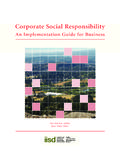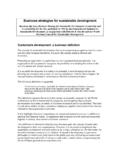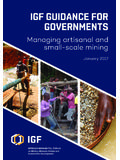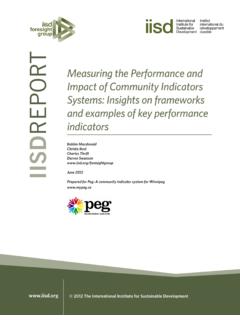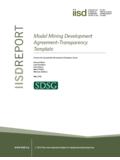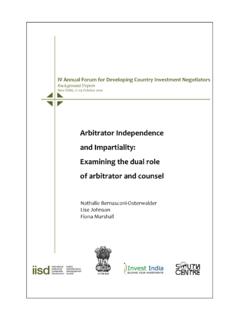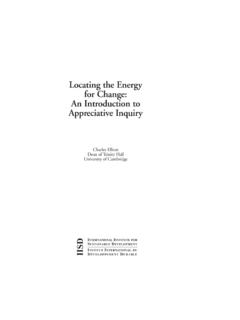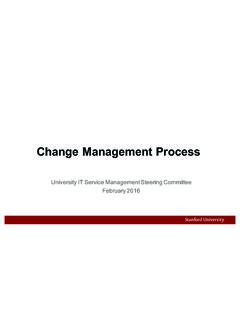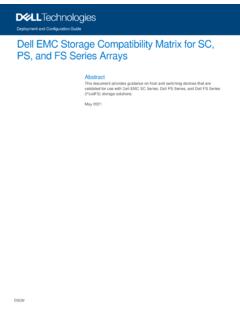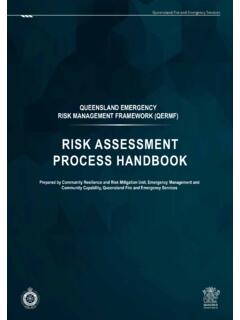Transcription of Impact Assessment Methods - International Institute for ...
1 1 Impact Assessment Methods This document outlines several common Impact Assessment Methods , including: Expert judgment Quantitative physical and mathematical models Cumulative Impact Assessment Matrices and interaction diagrams Rapid Impact Assessment matrix (RIAM) Battelle Environmental Evaluation System Expert judgment is based on the professional option of experts that have considerable experience in the areas of assessed impacts such as on water, soil, biodiversity and communities. Expert judgments can be used when limited data and information are available that did not allow for predictive modelling to explore the impacts. Expert judgments can be used in conjunction with quantitative modelling and to complement modelling. They can also help interpret results and their consequences on other sectors and communities, for example. For issues where data are available, quantitative physical and mathematical models linking different aspects of the hydrological cycle, watershed-level impacts, impacts of changes in water and other land and ecosystems available for biodiversity and resources accessible for the surrounding communities.
2 The choice and use of quantitative models for Impact prediction should be suited to the particular cause-effect relationship being studied; for example, transport and fate of oil spills, sediment loadings and fish growth and pesticide pollution of groundwater aquifers; examples of the use of quantitative models include (UNU, UNEP, RMIT, 2007): Air dispersion models to predict emissions and pollution concentrations at various locations resulting from the operation of a coal-fired power plant. Hydrological models to predict changes in the flow regime of rivers resulting from the construction of a reservoir. Ecological models to predict changes in aquatic biota ( , benthos, fish) resulting from discharge of toxic substances. Recently, there is a stronger focus within EIAs to assess social impacts and consequences of the planned project and alternatives. The focus on the social issues is now formulated in a standardized procedure called a social Impact Assessment .
3 Cumulative Impact Assessment : A key part of the Impact Assessment is the Assessment of cumulative impacts of the already listed impacts. Multiple and successive environmental and social impacts from existing developments can reinforce each other, leading to more serious consequences on environment and people than each of the developments separately. This may result in significant cumulative impacts; such cumulative impacts could include (USAID, 2011): Increases in pollutant concentrations in a water body or in the soil or sediments, or their bioaccumulation. Reduction of water flow in a watershed due to multiple withdrawals. Increases in sediment loads on a watershed or increased erosion. Interference with migratory routes or wildlife movement. 2 Increased pressure on the carrying capacity or the survival of indicator species in an ecosystem. Wildlife population reduction caused by increased hunting, road kills, and forestry operations.
4 Depletion of a forest as a result of multiple logging concessions. Secondary or induced social impacts, such as in-migration, or more traffic congestion and accidents along community roadways owing to increases in transport activity in a project s area of influence. According to the International Finance Corporation (IFC) (2013, ), [b]ecause it is usually beyond the capability of any one party to implement all of the measures needed to reduce or eliminate cumulative impacts, collaborative efforts will likely be needed. Governments can play a significant role in ensuring environmental and social sustainability by providing and implementing enabling regulatory frameworks that guide and support the appropriate identification and management of cumulative impacts and risks. Matrices and interaction diagrams: These are the most commonly used approaches in the EIA. Matrices take the form of a grid or table that allows the Assessment of linkages or impacts between the issues listed in the rows and columns.
5 This includes, for example, the impacts at all stages of the project development, operation and closure for each of the elements of the environment and society. The matrices can display quantitative information by, for example, listing the amount of waste produced, water extracted or qualitative information such as high, medium, low impacts. Information entered into the matrices can be based on all of the already discussed Methods . The advantages of using matrices is that they provide an easy-to-understand visual representation across all the impacts. There are several types of matrices have been used in EIA. Most commonly used matrix is the so-called Leopold matrix applied in the paper industry in 1971. This matrix was designed for the Assessment of impacts associated with most types of construction projects, listing 100 different project actions along one axis and 88 environmental characteristics and conditions along the other, including aspects of both the biophysical and socioeconomic environments (FAO, 1996).
6 Rapid Impact Assessment matrix (RIAM) RIAM is a systematic approach using qualitative data that can be expressed in a semi-quantitative way. The RIAM method uses a multidisciplinary team to organize the analysis process into an interactive and coherent form that encourages participation throughout the process (Inter-American Development Bank, 2010).The system makes it possible to create an Impact profile which allows the practitioner to make a rapid comparison to the development options. There are four aspects of the environment that are analyzed; physical-chemical, biological, human and economic. The process that RIAM follows is to identify significant changes (positive and negative) caused by the project, establish a baseline for the monitoring plan, identify mitigation strategies and design a monitoring and evaluation system to determine the effectiveness of the mitigation strategies (FAO, 1996). Using the RIAM method, public participation is carried out at the data collection and mitigation stages of the process .
7 Both of these stages are directly followed by quality control measures during the analysis and program monitoring stages. The multidisciplinary team allows data from different sectors to be analyzed at the same time in one common matrix . A rapid and clear evaluation of the 3 most important impacts the project may have is thus made possible. Such a matrix also allows the team to compare different development options according to how the four aspects of the environment may react to an action. Battelle Environmental Evaluation System In this method, environmental impacts are split into main categories; ecology, pollution, aesthetics and human interest. This method is helpful to determine alternatives to the proposed project plan. Indicators are then chosen to measure specific parameters within each category. For example: Ecology includes species and populations, habitats and communities and ecosystems. Indicators used to identify the current state of the environment.
8 Once indicators are chosen for each category, three steps are carried out (FAO, 1996): 1. Indicators are used to describe the current state of the environment, which is then rated between 0 to 1, 0 being poor quality and 1 being good quality, so that environmental deterioration or improvement can be quantified. 2. 1,000 total points (Parameter Importance Units) are shared among all the indicators to reflect the importance of each parameter. 3. A comparison is then done on the quality of the state of the environment with and without the project using the following equation: (Vi) environmental quality for indicator i project conditions (Vi) environmental quality for indicator I without the project w relative weight of the indicator i (EIU) m total number of indicators. 4 References Food and Agriculture Organization of the United Nations (FAO). (1996). Environmental Impact Assessment and environmental auditing in the pulp and paper industry (Working paper 129).
9 Rome. Retrieved from International Finance Corporation (IFC). (2013). Good practice handbook: Cumulative Impact Assessment and management Guidance for the private sector in emerging markets. Retrieved from United States Agency for International Development (USAID). (2011). Technical Review Guidelines: Energy Generation and Transmission. Vol 1, pt 2. P. 29-52. Retrieved from United Nations University (UNU), UNEP, & RMIT. (2007). Environmental Impact Assessment (EIA) Open educational resource. Retrieved from Source: EIA Online Learning Platform - International Institute for Sustainable Development
